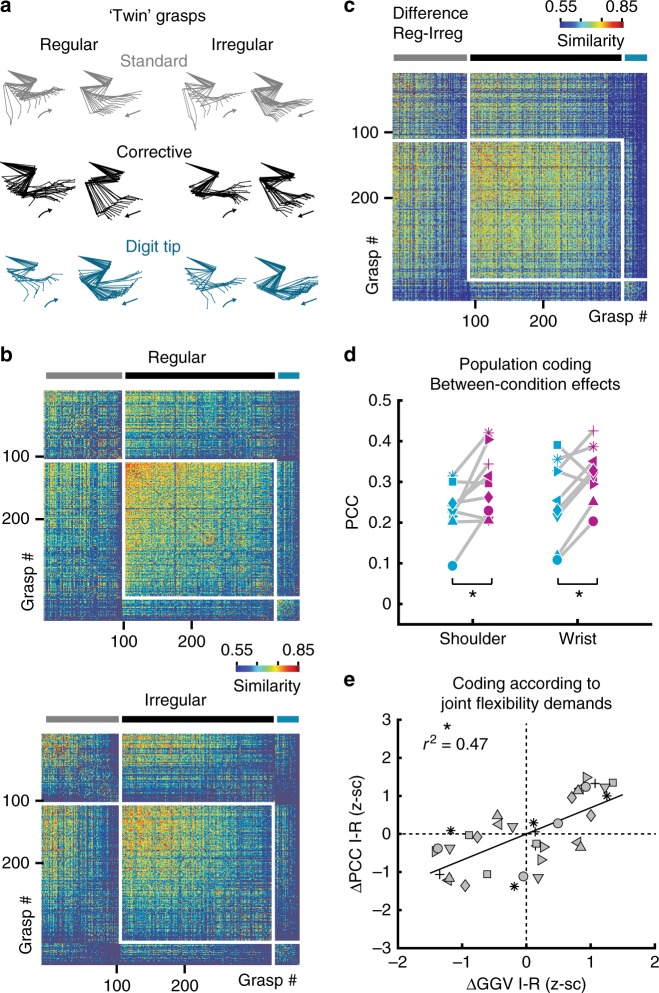Fig. 6.
Encoding of forelimb variables for twin grasps in different contexts. a Representative examples of twin grasp pairs for the regular and irregular condition. b Similarity matrices for the regular and irregular condition after the twin-movement pruning for the same example animal as in Fig. 1g: For each movement on the regular wheel, a near-identical “twin”-movement on the irregular wheel exists that belongs to the same grasp type and features minimal differences in the sample-point-wise Euclidean distance calculated for the 12-dimensional space of joint angles (4) as well as their speed (4), and acceleration values (4). c Similarity matrix for the difference between regular and irregular after the twin-pruning. d Between the regular and irregular condition, the significant encoding differences for shoulder and wrist are preserved when only twin grasps are regarded. Same conventions as in Fig. 5c. Asterisks indicate P < 0.05 (paired t-test for shoulder and Wilcoxon signed rank test for wrist, P-values adjusted according to HB). e Differences in the encoding of individual joint angles when grasps from each twin grasp cluster are pooled per condition versus differences in their total grasp-to-grasp variability from the regular to the irregular condition. Same conventions as in Fig. 5d. Asterisk indicates P < 0.05; linear regression with clustered standard error (robust); cluster variable = neuronal network

